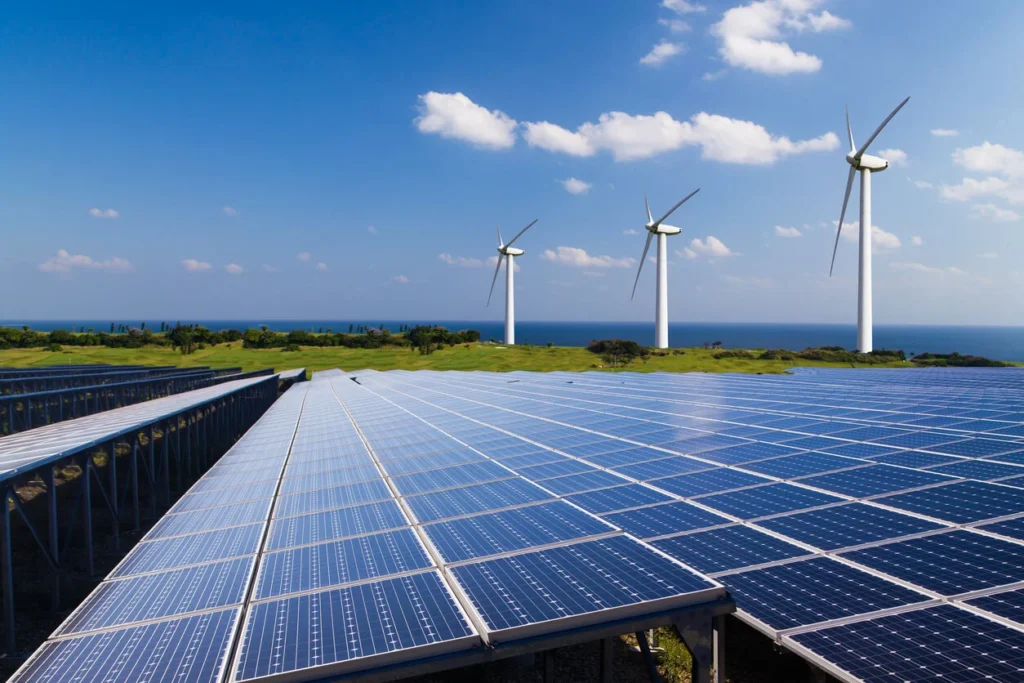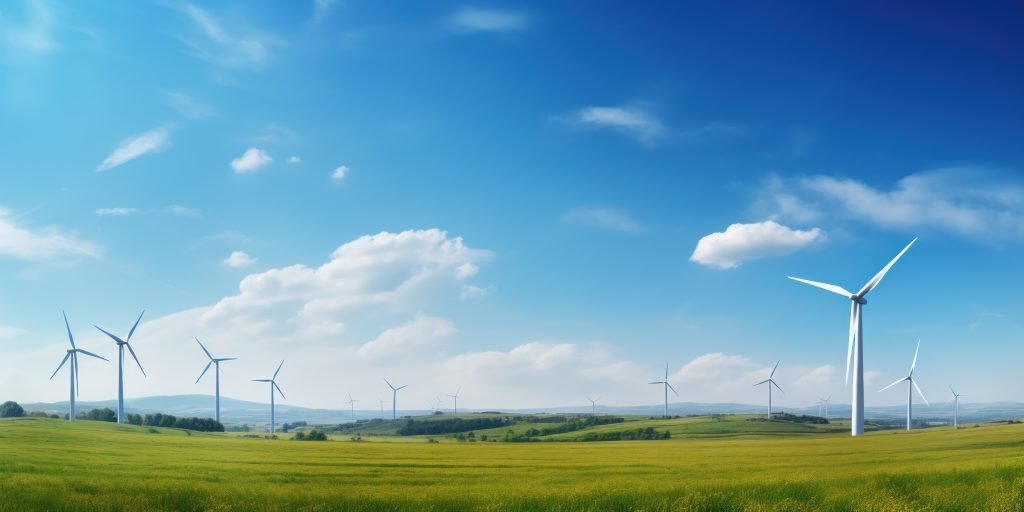In a significant move towards clean energy cooperation, UAE Morocco wind energy projects are set to reshape the renewable energy landscape in North Africa. Several UAE-based companies are currently in advanced talks with the Moroccan government and private sector partners to launch large-scale wind energy initiatives across the kingdom. This collaboration reflects a broader commitment to sustainability, economic diversification, and regional energy security.
Why Morocco is attracting UAE investors
Morocco has been making headlines as one of Africa’s renewable energy leaders. The country has ambitious plans to source over 52% of its electricity from renewables by 2030, with a strong emphasis on wind and solar power. Its geographical advantages — including strong Atlantic winds and vast open spaces — make it an ideal location for wind energy farms.
Meanwhile, the United Arab Emirates has been actively expanding its clean energy portfolio at home and abroad. As part of its Net Zero by 2050 strategic initiative, the UAE is investing in renewable energy projects across the Middle East, Africa, and beyond.

The combination of Morocco’s natural resources and the UAE’s financial and technological capabilities has created a perfect match for cooperation.
Details of the proposed UAE Morocco wind energy projects
According to industry sources, UAE firms such as Masdar (Abu Dhabi Future Energy Company), along with other private renewable energy investors, are discussing multiple wind farm projects in Morocco.
These projects are expected to focus on key regions known for their strong wind potential, including:
- Tarfaya, already home to one of Africa’s largest wind farms.
- Essaouira, famous for its consistent Atlantic winds.
- Dakhla, a region with high wind speeds and available land for large-scale projects.
The total capacity under discussion could reach up to 1,500 MW over the next decade. These wind energy projects aim to supply electricity to the Moroccan grid, support industrial activities, and potentially contribute to green hydrogen production — an emerging sector in Morocco’s energy strategy.
Economic and environmental benefits
The UAE Morocco wind energy projects promise a wide range of economic and environmental benefits:
- Job creation: Local construction, operation, and maintenance jobs will help reduce unemployment and support community development.
- Technology transfer: UAE expertise in large-scale renewable energy projects will boost local technical skills and know-how in Morocco.
- Reduced emissions: Accelerating wind power reduces Morocco’s dependence on coal and oil, helping achieve its emissions reduction targets.
- Regional energy leadership: Strengthening Morocco’s position as a green energy hub in North Africa.
A boost for Morocco’s green hydrogen ambitions
Morocco has identified green hydrogen as a major pillar for its future energy exports, especially to Europe. Wind energy is a crucial component, as it provides the clean electricity needed to produce hydrogen from water via electrolysis.
With the UAE’s experience in both renewable electricity and hydrogen development, these joint projects could help Morocco become one of the top exporters of green hydrogen in the region. This not only enhances Morocco’s economic prospects but also aligns with the UAE’s strategic goals of leading global clean energy transitions.
UAE’s global renewable strategy aligns with Morocco
The UAE has long recognized the importance of investing beyond its borders to secure energy futures and diversify economic activities. Its flagship renewable energy company, Masdar, already operates in more than 40 countries and has a strong track record in large-scale solar and wind projects.

By partnering with Morocco, the UAE strengthens its ties with Africa while supporting global sustainability goals. This strategy aligns with the UAE’s commitment showcased at international forums like COP28, where leaders emphasized cross-border cooperation to combat climate change.
Challenges on the horizon
Despite the promising outlook, there are several challenges that the UAE Morocco wind energy projects will need to navigate:
- Regulatory hurdles: Morocco’s renewable energy framework is still evolving, and licensing large-scale wind projects can involve complex approval processes.
- Grid integration: Large amounts of intermittent wind power require grid upgrades and smart management to maintain reliability.
- Land and community issues: Ensuring that local communities benefit from these projects and that land use conflicts are minimized is crucial.
- Financing and risk sharing: Large capital investments require careful structuring to balance risks between public and private partners.
Both sides are reportedly working closely to address these challenges early in the planning phases, aiming to set clear frameworks and secure community support.
Opportunities for further cooperation
The UAE Morocco wind energy projects represent only the beginning of a broader green partnership. Beyond wind, the two countries could collaborate on:
- Solar energy projects, leveraging Morocco’s high solar irradiation levels.
- Energy storage technologies, to address intermittency challenges.
- Research and development, especially in next-generation renewable technologies and energy efficiency.
- Educational and training programs, building a skilled workforce for the future green economy.
Such holistic cooperation can create a model for other Arab and African countries to follow, demonstrating how cross-border partnerships can accelerate clean energy transitions.
Morocco’s leadership in Africa’s energy transition
Morocco has already established itself as a renewable energy pioneer in Africa. The Noor Ouarzazate solar complex, for instance, is the largest concentrated solar power plant in the world. Combined with the country’s wind projects, Morocco is on track to become a significant renewable energy exporter.
Through partnerships with UAE firms, Morocco can further strengthen this leadership and help the wider region reduce dependence on fossil fuels. In the future, Morocco could become a key supplier of green electricity and green hydrogen to Europe and other neighboring markets, fulfilling its strategic ambitions.
UAE’s regional influence and sustainability vision
For the UAE, investing in Moroccan wind energy is part of a wider ambition to diversify its economy and become a leader in sustainable development. The UAE has already demonstrated its commitment with local projects like the Mohammed bin Rashid Al Maktoum Solar Park and international investments across Asia, Africa, and Europe.
By supporting Morocco, the UAE also deepens its diplomatic and economic ties in North Africa. This strengthens its influence and positions the country as a reliable partner in the global fight against climate change.
Local communities: Key to success

Community engagement will play a critical role in ensuring the long-term success of these wind energy projects. Previous renewable energy projects in Morocco have shown that transparent communication, fair compensation, and shared benefits are crucial to gaining local support.
UAE companies are reportedly planning to include strong community development programs as part of their investment packages. These may include local infrastructure improvements, educational initiatives, and job training centers.
The road ahead
As discussions continue, both Morocco and the UAE appear committed to finalizing agreements and starting construction within the next two years. Initial feasibility studies and environmental impact assessments are already underway.
If successfully executed, the UAE Morocco wind energy projects could become a flagship example of cross-border cooperation in the renewable energy sector. They could serve as a blueprint for similar partnerships in Africa, the Middle East, and beyond.
Conclusion: A win-win green future
The UAE Morocco wind energy projects symbolize a shared vision of a cleaner, more sustainable future. By combining Morocco’s abundant wind resources with UAE’s investment power and technical expertise, the two nations are setting a strong example of how collaboration can accelerate global energy transitions.
As the world moves towards more ambitious climate goals, such partnerships will become even more essential. With careful planning, community engagement, and shared commitment, the UAE Morocco wind energy projects have the potential to deliver lasting economic, social, and environmental benefits for both countries — and for the planet as a whole.
Follow us on Instagram: UAE STORIES
Read More: SABIC gas subsidiary IPO: Saudi giant eyes market listing













